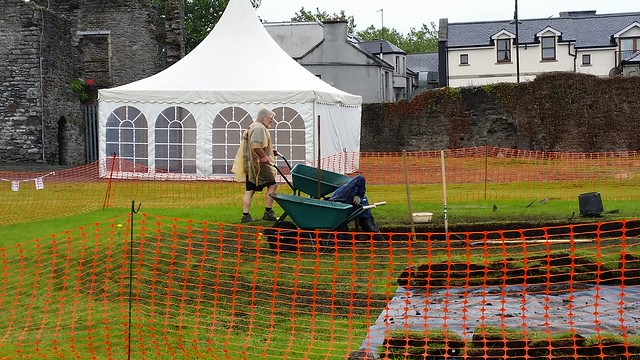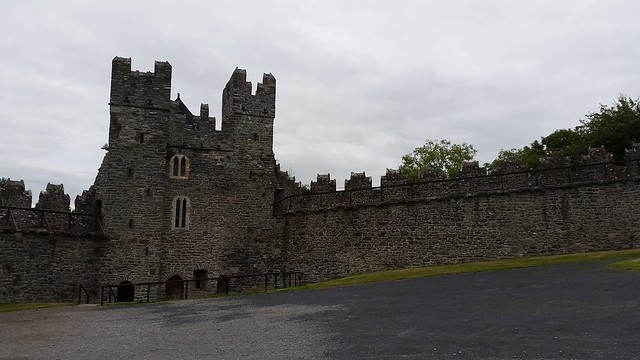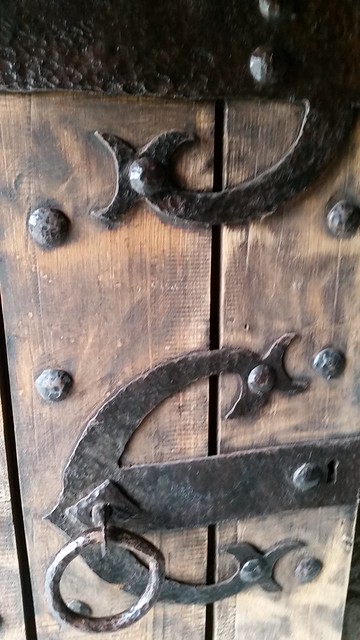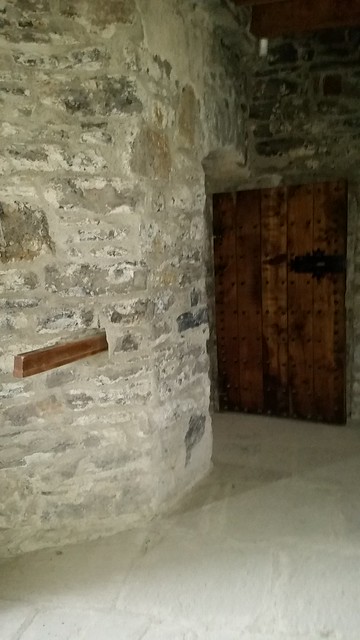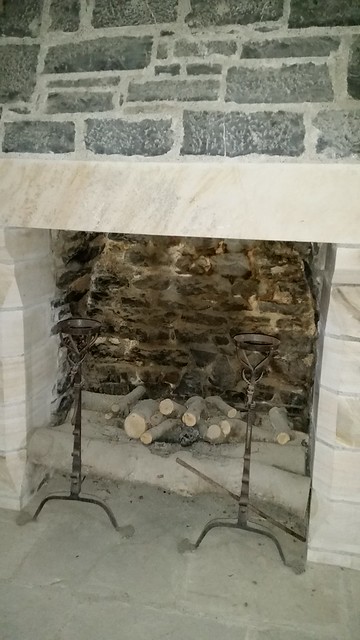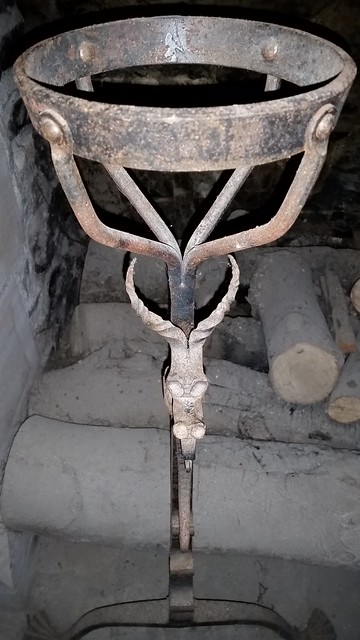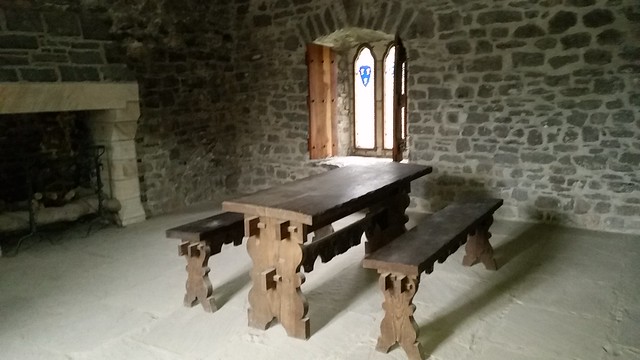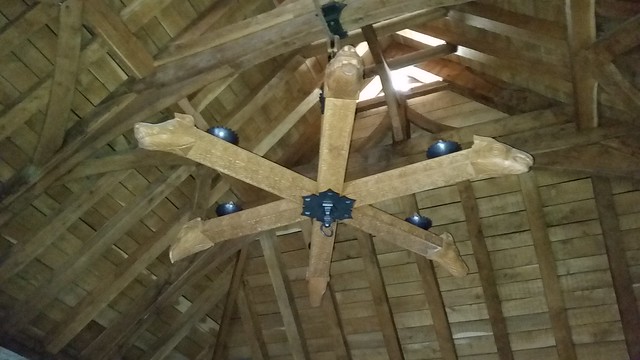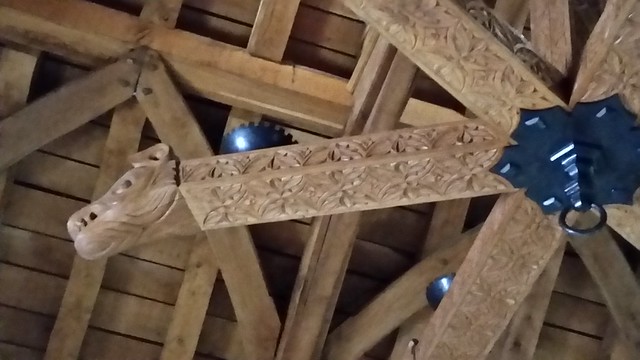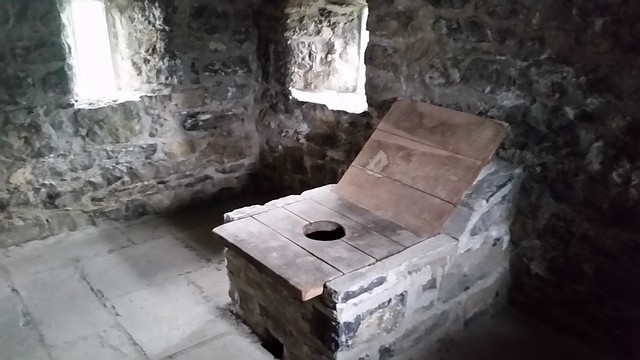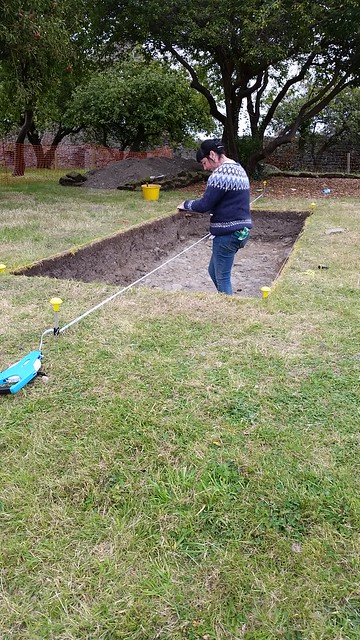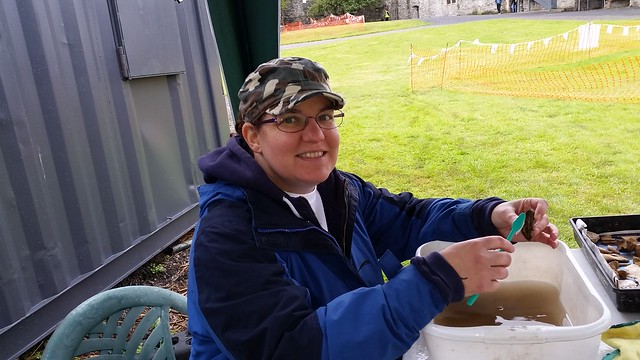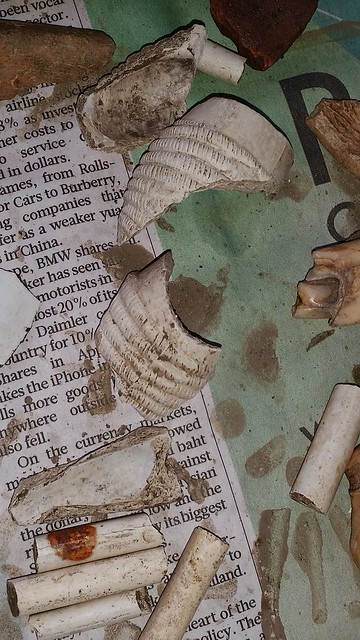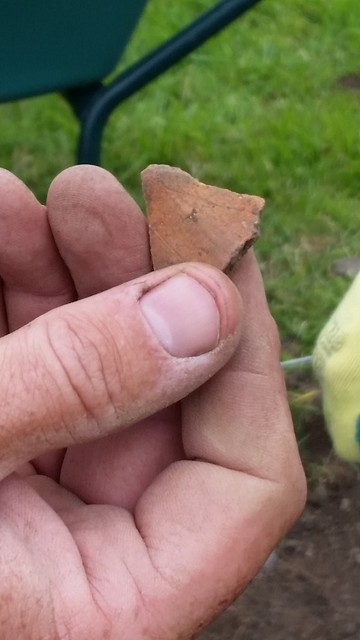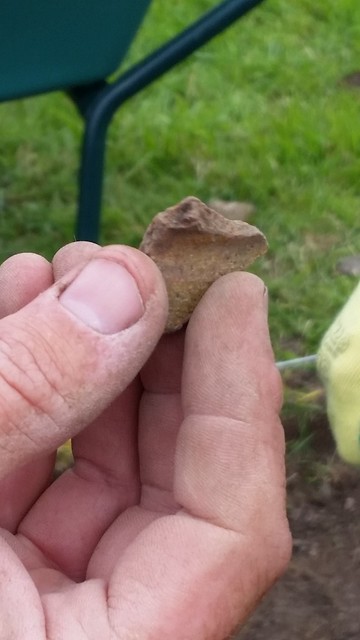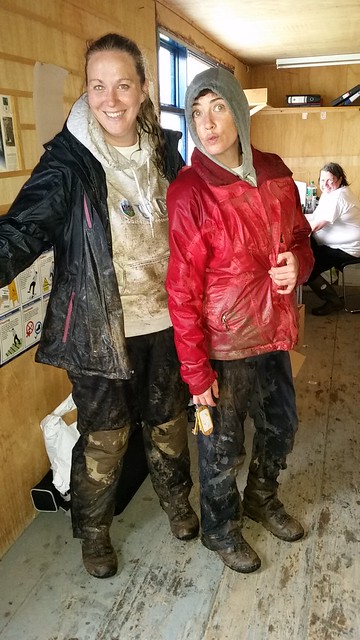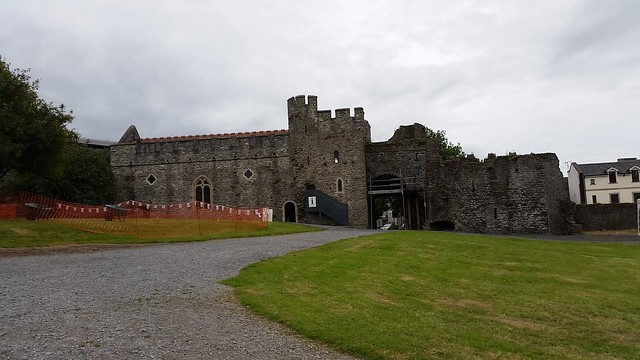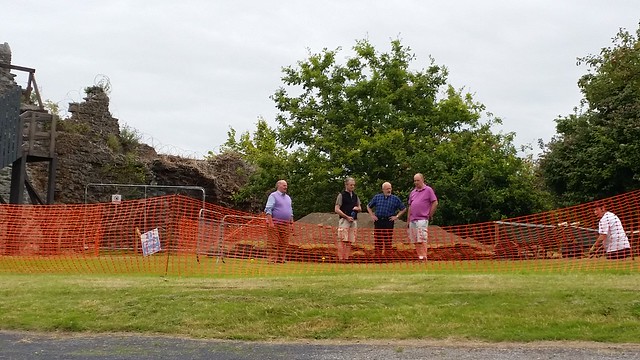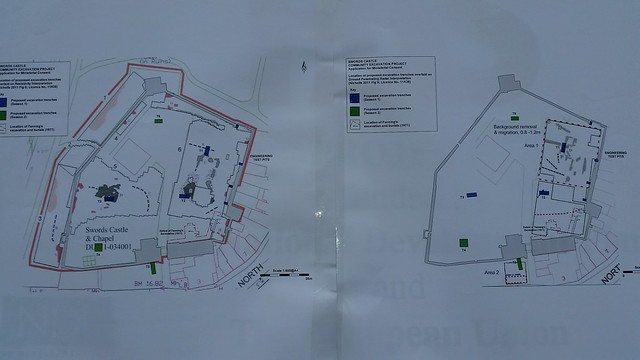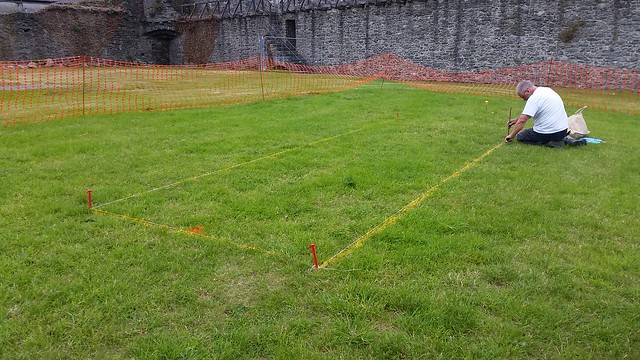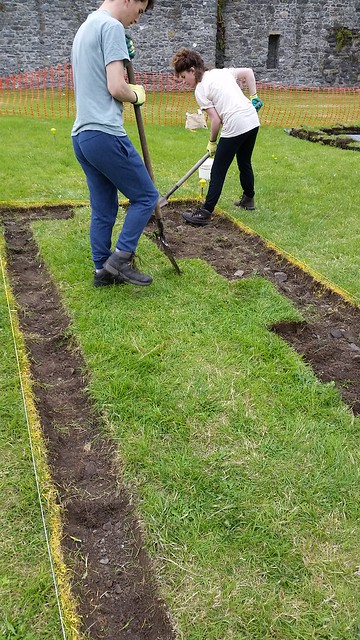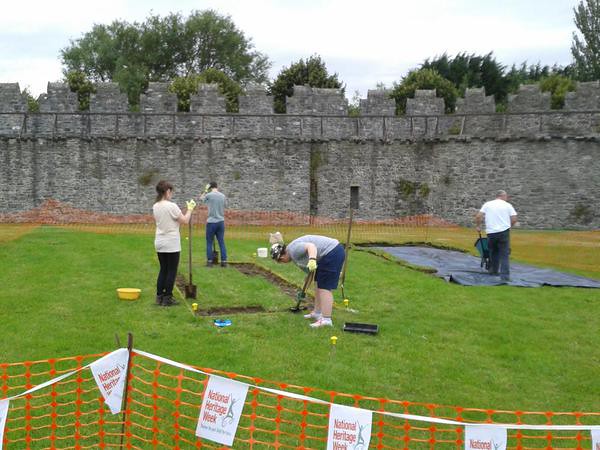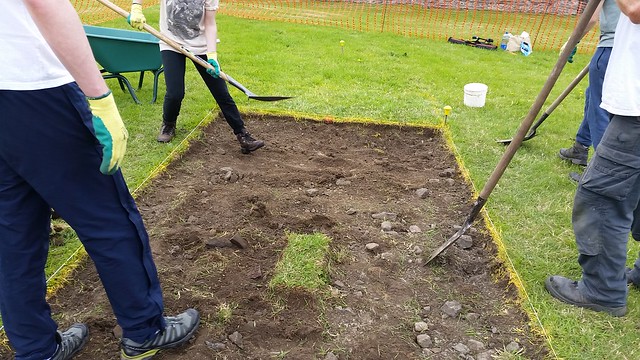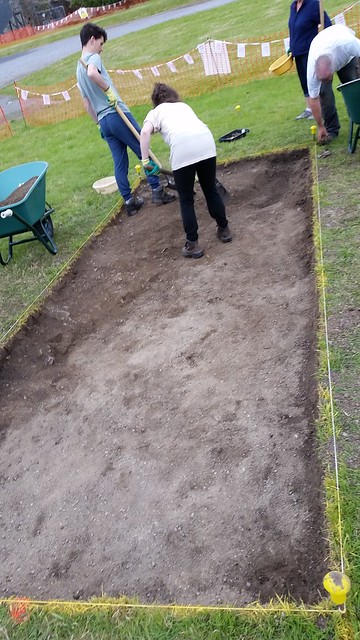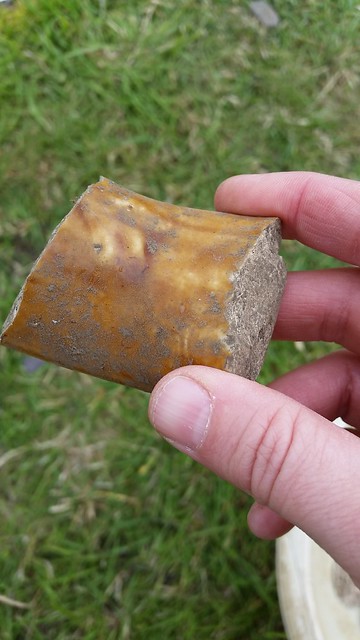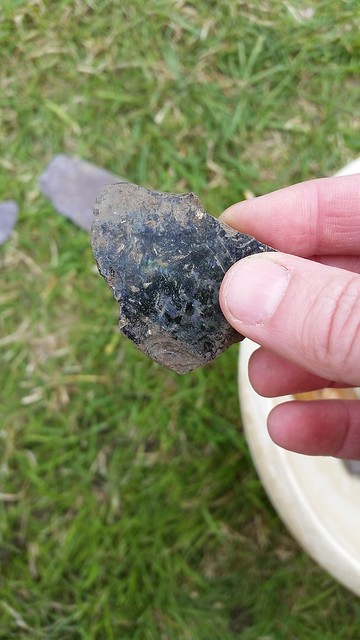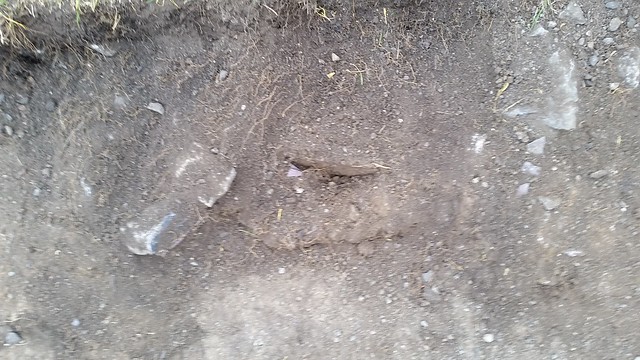
View of Cahir Castle in Spring with the road to the right.
Cahir Castle was first built in wood in 1142 by Conchobar Ua Briain, King of Thomond, on what was then an island in the River Suir, and replaced an older stone ring fort (Irish: Cathir) at the same location. This “stone fort” lent its name to the castle and later, the town that grew up around the castle (Cahir).
The Castle grew in two parts, with the side nearest the main street and bridge being built about the 13th century when the original fortress was granted to James Butler, newly created Earl of Ormond, for his loyalty to English King Edward III. The Butler family became very powerful, and in the 1500’s (about 200 years later) added in the section of the castle which now houses the Audio-Visual presentation. By 1542 when the first of the Barons Cahir was created, and during the Tudor – Elizabethan era, the Butlers in Ireland sided with the Catholics.
 View of castle from inch field / park area
View of castle from inch field / park area
Despite being thought of as rather impregnable (It had stood strong for nearly 400 years) in 1599, during the reign of Queen Elizabeth, the castle was beseiged by Robert Devereux, the Earl of Essex before finally falling to heavy artillery that was used against it for the first time. Sir Charles Blount was put in charge of the castle and area for a year – until Lord Cahir joined with the Earl of Tyrone in 1601 took it back (he was charged with treason and later freed). In 1627, Cahir’s son-in-law, Lord Dunboyne, shockingly murdered his distant cousin, James Prendergast, at the castle in a dispute over an inheritance. Dunboyne was he was tried for the killing but acquitted not long after.
During the Irish Confederate Wars it was besieged twice more, in 1647 and 1650. Out of “date” design wise, the castle fell into ruin in the late 1700s before being partially restored (the great hall) in the 1840s. While mostly disused, the castle then remained in the Butler family line (Lord Cahir) until 1961 when the last Lord Cahir died and the castle became the property of Ireland. Tours and visits are currently run by the Office of Public works (OPW).
A short Tiktok of my third visit is below (note that the outside area only was open during covid and the photos above are from the other 2 visits).
@phoenixrosedsgn lets explore #Cahir #Castle #Tipperary #Ireland #free #opw #staycation #history #travel #tourism #thingstodo #midevilcastle ♬ Wasted by the Water (Original Club Mix) – Joe & Cahir



